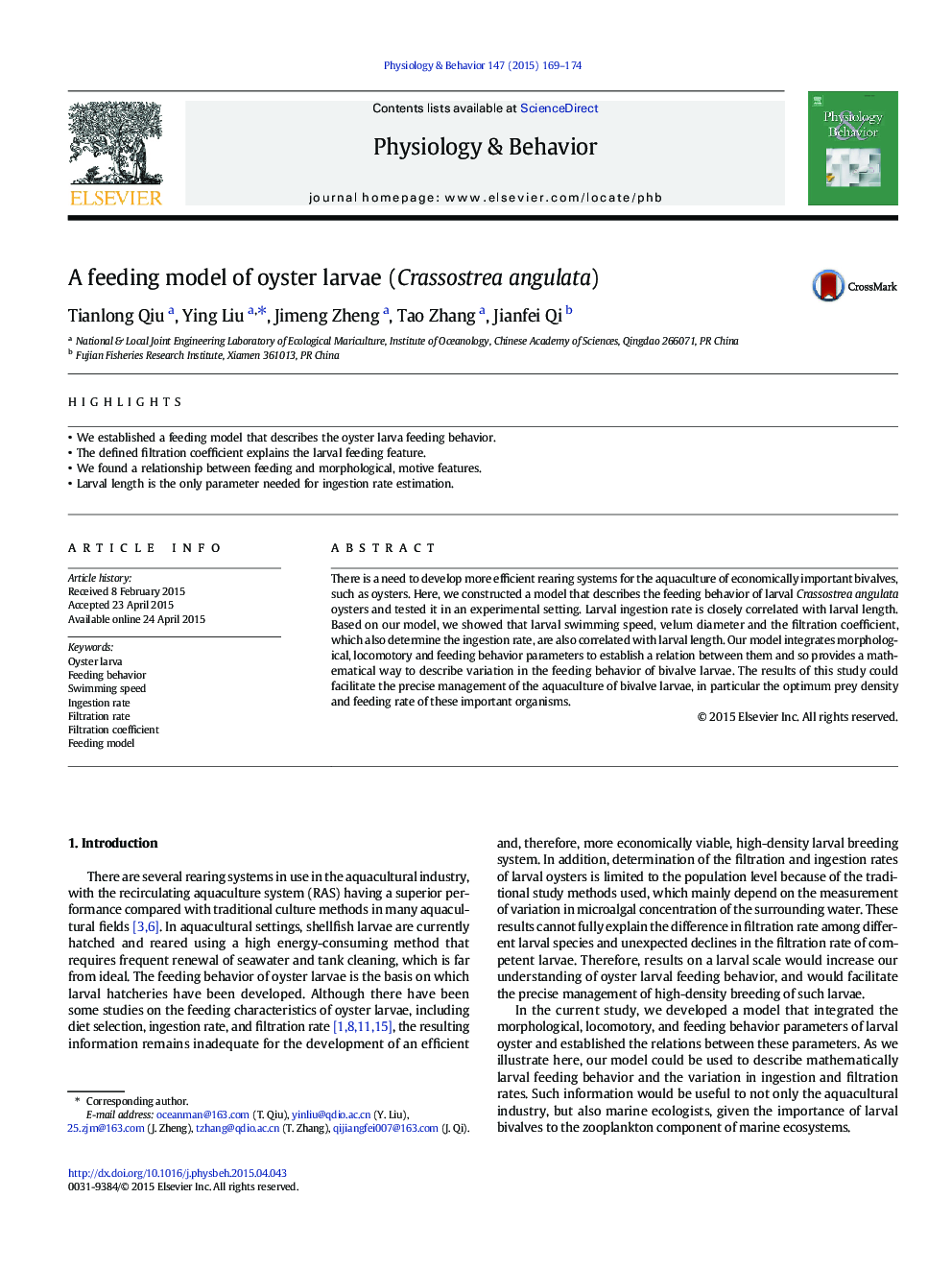| Article ID | Journal | Published Year | Pages | File Type |
|---|---|---|---|---|
| 5923458 | Physiology & Behavior | 2015 | 6 Pages |
â¢We established a feeding model that describes the oyster larva feeding behavior.â¢The defined filtration coefficient explains the larval feeding feature.â¢We found a relationship between feeding and morphological, motive features.â¢Larval length is the only parameter needed for ingestion rate estimation.
There is a need to develop more efficient rearing systems for the aquaculture of economically important bivalves, such as oysters. Here, we constructed a model that describes the feeding behavior of larval Crassostrea angulata oysters and tested it in an experimental setting. Larval ingestion rate is closely correlated with larval length. Based on our model, we showed that larval swimming speed, velum diameter and the filtration coefficient, which also determine the ingestion rate, are also correlated with larval length. Our model integrates morphological, locomotory and feeding behavior parameters to establish a relation between them and so provides a mathematical way to describe variation in the feeding behavior of bivalve larvae. The results of this study could facilitate the precise management of the aquaculture of bivalve larvae, in particular the optimum prey density and feeding rate of these important organisms.
